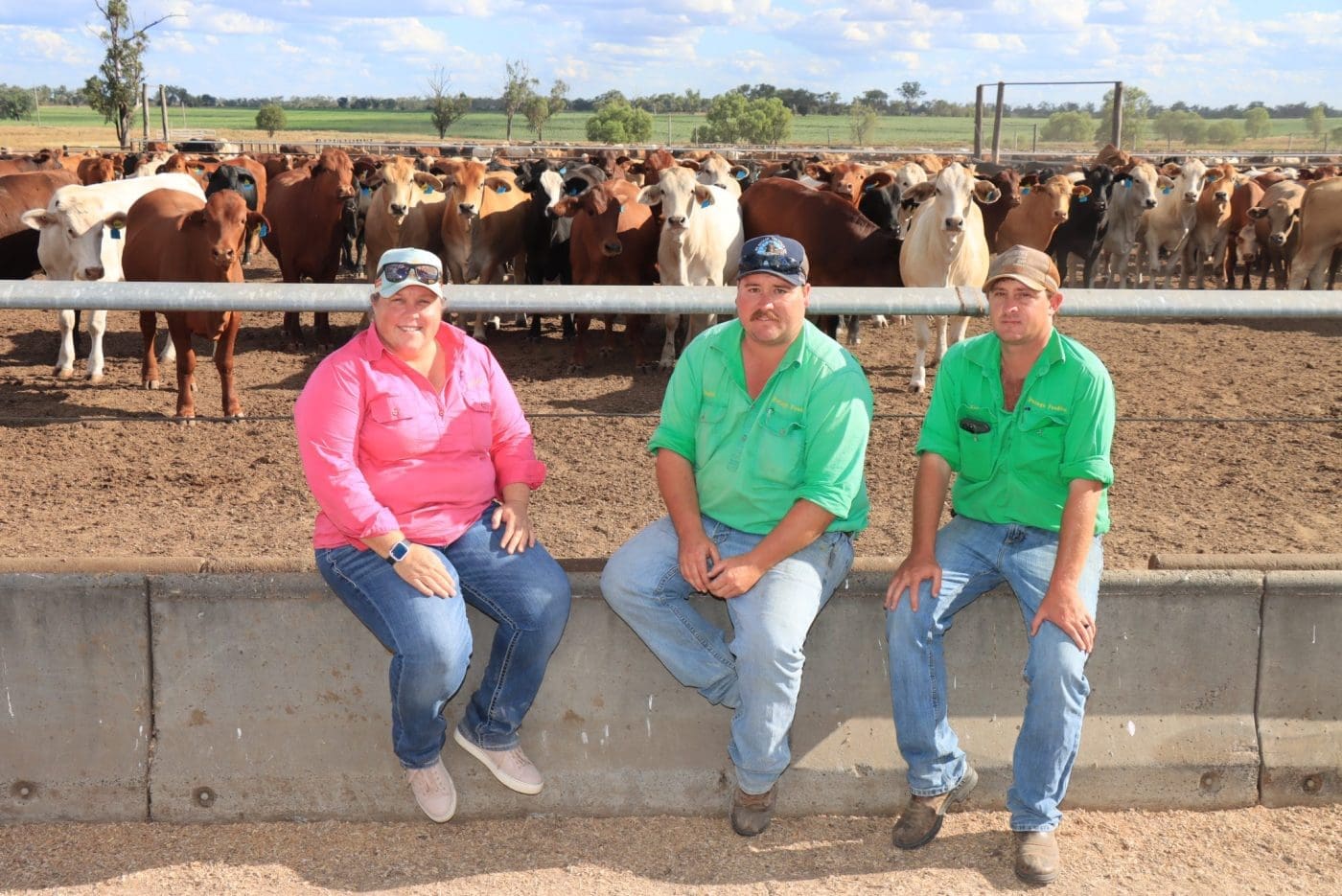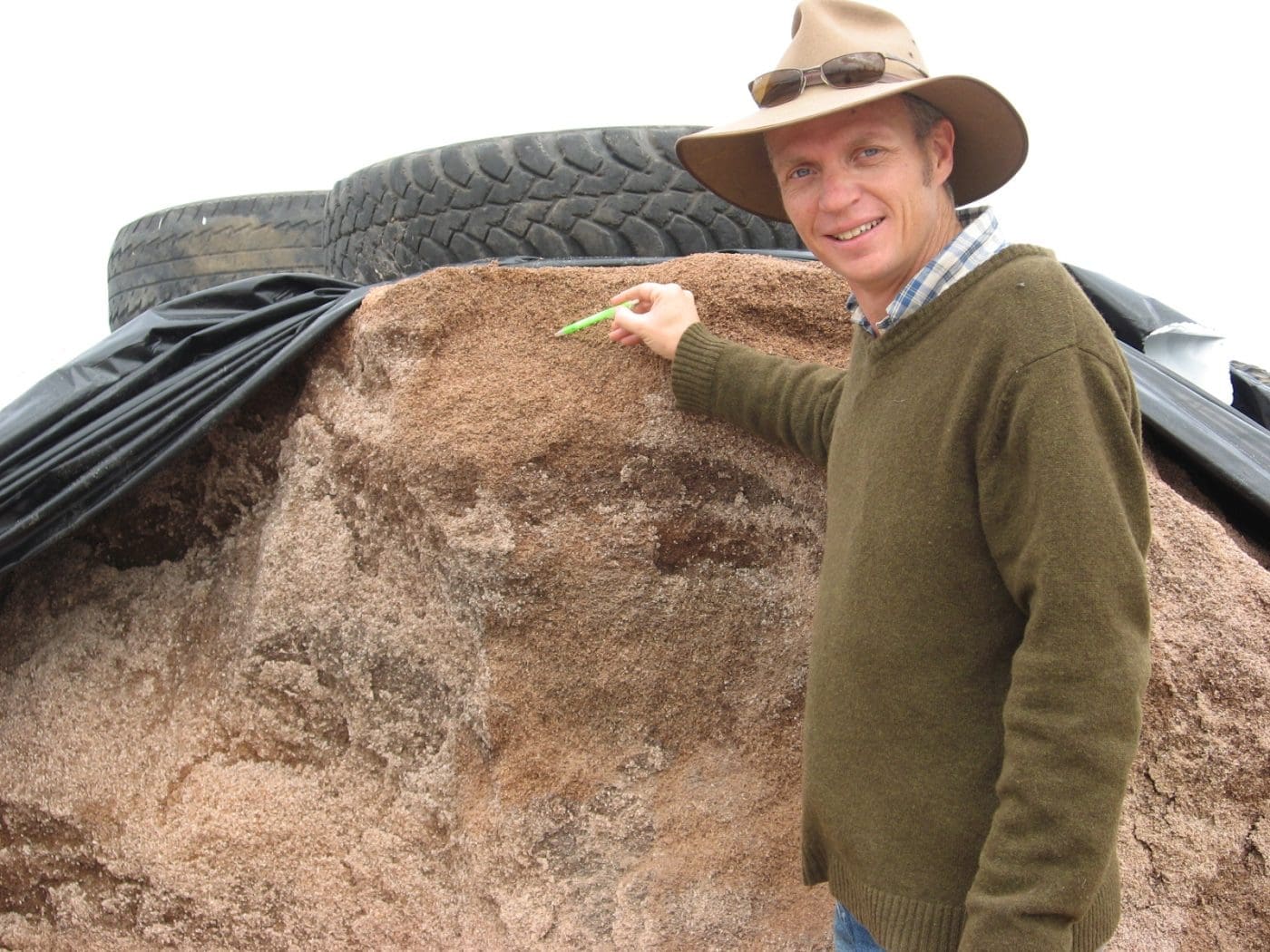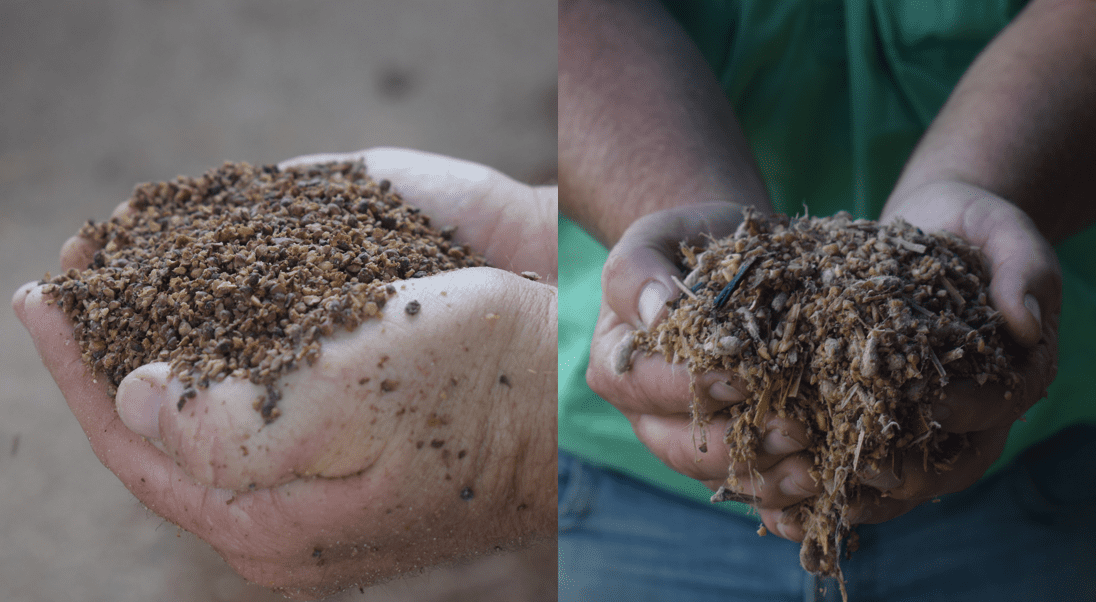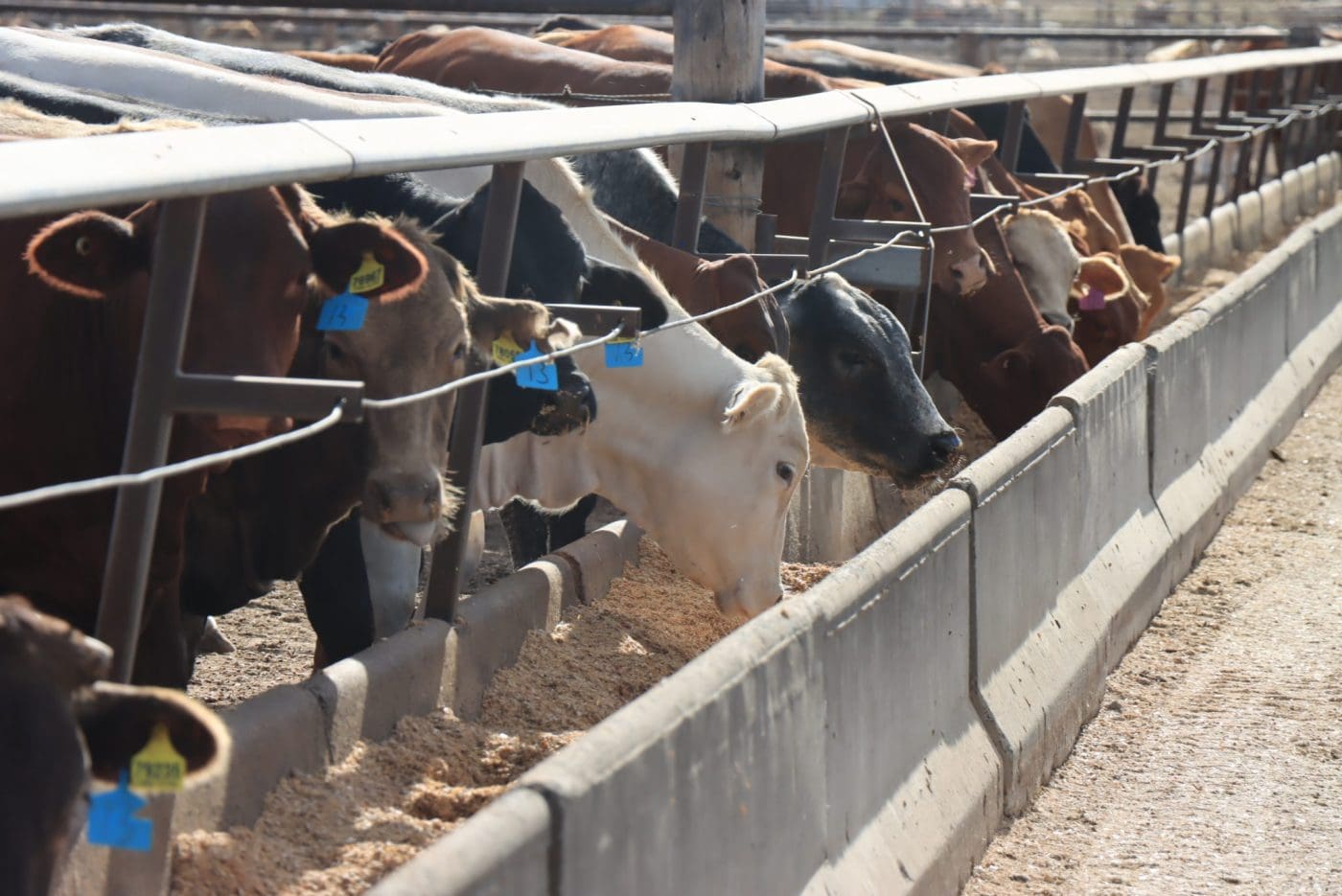
Paringa Feedlot staff Janeta Banks, Kley Booth and manager Hamish Muntelwit. Photo: Eric Barker
ONE of Central Queensland’s early movers into lotfeeding has been paving a path for large-scale utilisation of one of the area’s most reliable grains – sorghum.
Paringa feedlot, near Capella, was constructed in the 1980s and has progressively developed over the years to its 5000-head capacity today.
Paringa has plans to double its capacity in the coming years to keep servicing its long-term contract and custom-feeding clients.
Sorghum processing has been a major part of that development, as the operation has gone from dry-rolled sorghum, to tempered sorghum and onto a process of fermenting sorghum which they say stacks up in available energy when compared to wheat and barley.
With such potential to reliably grow large amounts of sorghum on site and buy from the local area, Paringa’s owner Philip Reid and the company’s nutritionist Rob Lawrence from Integrated Animal Production decided they needed to come up with better way of using the grain.
Dr Lawrence said while the area can grow big wheat crops, they are nowhere near as consistent as the sorghum crops.
“Sorghum is everywhere; it is down to Emerald, out to Springsure, around Capella and all the way up the Belyando Crossing,” Dr Lawrence said.
“You have this massive resource and to get the value out of it, you have to find a way to use it more effectively.
“For fermentation, you just add water.”
How the process works
With the fermented sorghum requiring a high moisture content, the grain can virtually be harvested when the grain can be separated from the plant.
The sorghum is then processed through a roller mill which cracks the grain open before it is put into a wetting auger where water and an inoculant is added to get the moisture level up to 35pc moisture.
The grain is then transferred, compacted and covered in a concrete bund.
Farming manager Kley Booth said early harvested sorghum was almost preferred – as the higher moisture content meant less water was needed to bring the grain up to 35pc. He said starting around 16.5pc moisture content was ideal.
“A lot of the grain we buy in is quite dry, about 11-12pc and it is hard to get the grain to accept the moisture when it is that dry. You can pump as much water into it as you want, but you can’t always get it up to the required 35pc mark that we aim for.”
In order to ferment, the sorghum needs to be stored for 30 days in an anaerobic environment, where oxygen cannot enter.
Paringa has built a long rectangular concrete bund for storage, where the grain is piled, shaped and rolled with machinery and covered with two tarps and a shade cloths to create the right environment.
Once it has fermented, the feed can stay in the bund long term.
“Once it is in the bund, you can store it for 12 months without any dramas,” Mr Booth said.
“You could probably go longer than that, but we don’t really have the storage to hold it for longer and it doesn’t make much economic sense for us to do that.
“We don’t need to store it for longer.”
Paringa normally does one big process of sorghum at harvest to fill up its concrete bund, which provides a big portion of its grain requirements for the year.
It also purchases white grains and additional sorghum from local producers and grain traders to fill the gaps.
“We normally do have a period where we go to wheat while we are waiting for our new fermented sorghum,” Mr Booth said.
“When we have access to sorghum again, we have to gradually add it back into the ration; eventually it makes up about 40pc of the mix.”
Reconstitution requires management
Reconstituting involves a dual-wetting process before putting the whole grain in a Harvestore silo for about 21 days.
The silo is sealed to prevent air entering.
The process initiates germination, but without access to oxygen, germination is stopped before the grain sprouts.
It is then let out the bottom of the silo, rolled, and fed in rations.
Dr Lawrence said reconstituted sorghum requires viable mature grain.
“You need a viable grain for reconstituted sorghum, because if it doesn’t germinate, then all you end up with is really wet sorghum.”
“It doesn’t matter with fermentation, because the process relies on microbial activity, the same principle as making silage.”
He said fermentation was a great low-cost investment that was easy to scale up and down because of its long-term storage.
“To scale up Paringa’s fermenting capacity, the feedlot has invested in a larger-capacity roller mill, a more efficient and higher-capacity wetting auger and an in-line NIR for continuous reading of the sorghum’s moisture level.
“The concrete-walled bund allows the feedlot to handle greater volumes at harvest, as well as ease of filling and compacting sorghum.
“The capital investment is lower than Harvestore silos, and provides greater flexibility in quantity fermented.
“With the fermented sorghum, you need the staff and the machinery working while you are doing it, like making silage, but the feedlot can just put down as many tonnes as they want, because they are not restricted by silo size.”
Trade-off against steam-flaking
CQ is a growth area for lotfeeding, with Paringa planning to expand, and companies like Mort & Co planning large-scale construction in the area.
Paringa has set itself up to feed the fermented sorghum in an expanded facility above 10,000 head.
Beef Central asked Dr Lawrence if he thought the fermented sorghum could become part of a large-scale lotfeeding operation.
He said there were trade-offs between steam-flaking and fermenting.
“When you are steam-flaking, you can tell whether the process is working or not by visual assessment and sampling for flake densities. If it doesn’t look right or the flake weight is getting heavy, then you can adjust the equipment and get it sorted straight away,” he said.
“One risk with the fermented sorghum is that if you put 1500t down and the moisture is not quite right and you only get 22pc moisture in the grain, then you have a lot of not very good grain to use and there is nothing you can do about it.”
Dr Lawrence said it was also important to note some of the limitations and costs with steam-flaking sorghum.
“There are always issues with getting enough moisture into the grain and the consistency of the cooking – even (with) sorghum that is the same variety off the same paddock, you can get variations.”
“Modern chests with higher capacities are more efficient, but sorghum requires a lot of management to get the most out of it.
“You are using more gas, it is more variable, and you are constantly adjusting the equipment.”
Dr Lawrence said there was definitely a scale where steam-flaking would be more efficient for processing sorghum than using fermentation.
“I have never done the exact calculations, but there is a trade-off somewhere between head numbers and where fermenting sorghum starts to become too labour intensive,” he said.




HAVE YOUR SAY